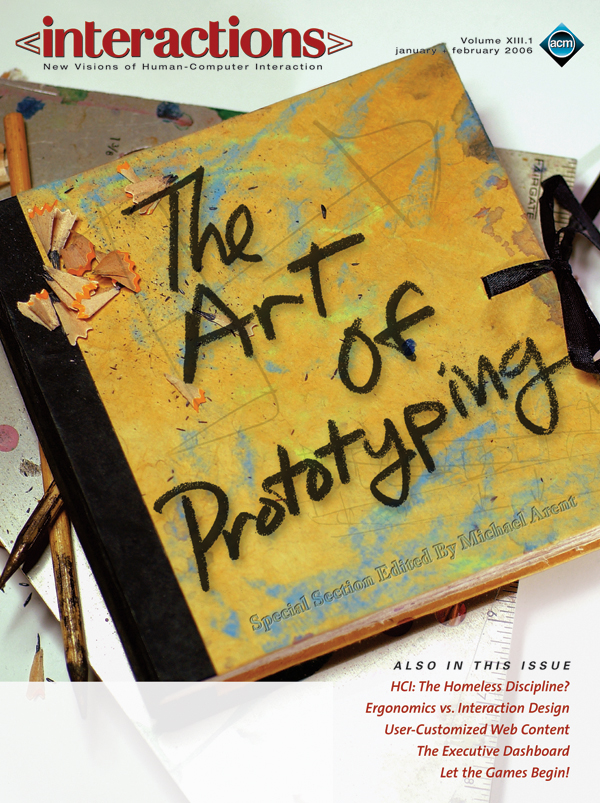Authors:
Nancy Frishberg
Interaction designers typically work with digital prototyping tools that have 2D (or at best 2.5D) visualization capability, e.g. Photoshop, Illustrator, Visio and even Powerpoint. Carolyn Synder's book Paper Prototyping encourages interaction designers, irrespective of artistic training or confidence in sketching, to use paper and markers to mock up screens [1]. She promotes these artifacts for their speed, low cost, ability to make ideas tangible, and lets users respond to them. Industrial designers often make rough 3D models simply to play out ideas in low-cost but physically tangible form. Likewise, three-dimensional modeling is employed by architects, structural engineers, and industrial…
You must be a member of SIGCHI, a subscriber to ACM's Digital Library, or an interactions subscriber to read the full text of this article.
GET ACCESS
Join ACM SIGCHIIn addition to all of the professional benefits of being a SIGCHI member, members get full access to interactions online content and receive the print version of the magazine bimonthly.
Subscribe to the ACM Digital Library
Get access to all interactions content online and the entire archive of ACM publications dating back to 1954. (Please check with your institution to see if it already has a subscription.)
Subscribe to interactions
Get full access to interactions online content and receive the print version of the magazine bimonthly.







Post Comment
No Comments Found